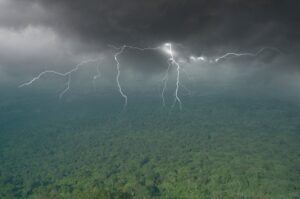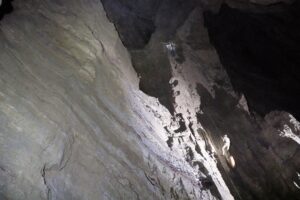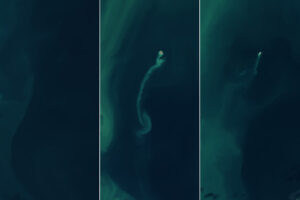The Namib Desert in Southern Africa hosts an odd phenomenon called fairy circles that we’ve covered before. This week, a new study may have cleared up what causes these mysterious desert speckles.
Fairy circles are 2-10m circular patches of barren land, evenly dotting the desert. Their origin has baffled scientists for decades. Theories ranged from termites to the self-organization of grasses. Now it seems we have a winner. New research seems to favor the grasses.
Lead researcher Stephan Getzin of the University of Gottingen in Germany said that the circles form when plants organize themselves that way in order to maintain little reservoirs of scarce water. He originally made this assumption based on research on a similar phenomenon in Australia, the only other place in the world that has such circles.
From 2020 to 2022, Getzin and his team studied the circles in the Namib Desert. These years featured periods of increased rain, which helped them better understand how the grasses around the circles behave.

Fairy circles in the Namib Desert. Photo: Felix Lipov/Shutterstock
Recent findings
Getzin’s team discovered that termites did not damage the surrounding grasses in any way. Sand termites do occur in this area throughout the year, but the vegetation was too sparse to attract them. That seemed to make the termite hypothesis unlikely.
But when they watched grasses after rainfall, they noticed that small bits of grass started growing at the centre of each circle but died 10 days later. After 20 days, the interior of the circle was completely barren again. They concluded that there was a connection between the grasses and water distribution.
Feedback loop
Getzin believes that the grasses are under constant stress from the desert heat, forcing them to send water directly to their roots. As the rainfall spreads out in the soil, traveling up to seven metres, the grasses organize themselves in a circle to distribute the water evenly. Getzin calls this “eco-hydrological feedback”.

The grasses organize themselves in a circle. Photo: orxy/Shutterstock
According to The New York Times, Dr. Norbert Juergens, who has championed the termite theory, has not yet commented on this new research.
Meanwhile, other researchers suggest alternative theories or at least variables to explore. These include toxic or parasitic plants and the type of soil. Can these fairy circles be replicated in a lab? While current evidence seems to support Getzin’s theory, he needs to rule out these other ideas before the case of the fairy circles is truly closed.






